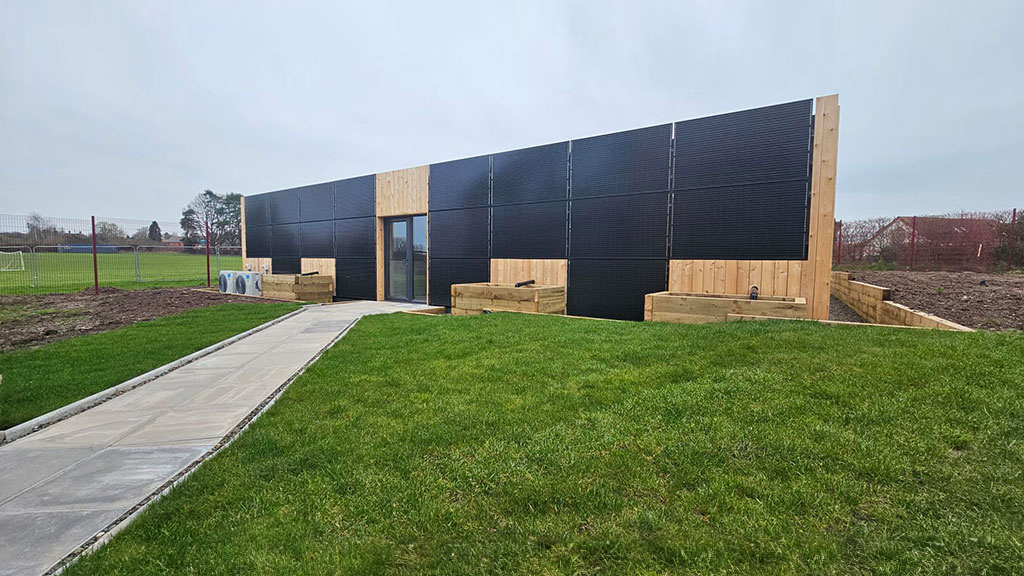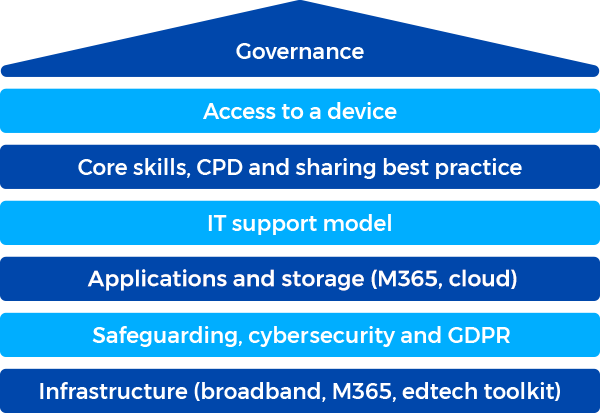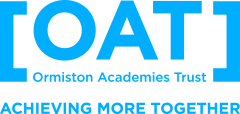We are committed to our pupils and academy staff, so that they have:
- Quality, warm and safe estates in which to learn and teach
- ICT resources that are flexible, appropriate and accessible, with safeguarding and security at the heart
- Guidance on purchasing to drive best value, savings and increase efficiency
Estates
We manage and provide structure and support to academies ensuring that buildings and sites are managed responsibly to be:
- Fit for purpose and comfortable for teaching and learning
- Safe, compliant and have a planned maintenance regime in place
- Improved to reduce carbon emissions and drive down high energy costs
We manage a portfolio value of approximately £1bn worth of buildings and sites across the trust and organise an annual programme of projects to improve compliance and address maintenance and curriculum need.
We work alongside other organisations such as local authorities, the DfE and grant-awarding bodies such as the Football Foundation and Sports England, to take advantage of funding opportunities to develop academy sites.
What we do
Good estates management and the life cycle of buildings are crucial in ensuring pupils and staff benefit from a built environment that is safe, warm, dry and which supports and enhances learning appropriately. The team is here to provide strategy and structure:
- good estate management
- premises development planning
- building condition and valuation
- statutory building compliance and planned maintenance
- health & safety and risk management
- energy reduction strategies
- capital building programmes

Environmental sustainability
We are committed to environmental sustainability and are working towards our Green Strategy. So far:
- We have ensured that OAT building refurbishment work reduces energy consumption. Examples include: improving thermal efficiency (roofs, windows, doors), improving heating controls combined with low energy consumption heating and hot water systems, and installation of LED lighting where possible with over three-quarters of OAT academies having high levels of LED lighting.
- We are generating our own energy: we now have 19 academies with solar panels, all generating over 1,100 MWh of electricity representing a total annual cost avoidance of approximately £330k.
- Several academies make use of biomass, ground source heat pumps and solar thermal tech.
- As a first, we are using innovative methods of construction; low carbon consuming offsite constructed buildings delivered at Ormiston Venture Academy, Cliff Park Ormiston Academy, Edward Worlledge Ormiston Academy and City of Norwich School.
We have committed to continue investment in green technologies to reduce carbon and energy consumption within academies. Further LED, PV and other low carbon heating and hot water system projects are planned in conjunction with future investment programmes.
What we’ve done so far
- Eco-schools Green Flag Award across 21 of our academies, with the aim to register 27 academies by the end of August 2024.
- 630 trees have been planted across many OAT academies, with over 300 eco-committee members across the trust driving initiatives in energy saving, biodiversity projects and the reduction of plastic, waste and litter as well as promoting sustainable forms of transport amongst our pupils.
- All electricity purchased through the OAT central contract is low carbon – OAT has one of the lowest carbon footprints per pupil at 0.16 tonne CO2e, most academy trusts’ carbon footprint per pupil is higher when comparing streamlined energy and carbon reporting data.
- Online monitoring system for energy and solar systems for nearly all academies is in place, allowing academies to monitor daily consumption of gas and electricity.
- All OAT building refurbishment and new building works are designed to reduce energy consumption by:
- Improving thermal efficiency – roofs, windows, doors
- Low energy consumption heating and hot water systems
- LED lighting
- Solar heating and PV generation
- All substantial procurements for goods and services include testing suppliers on their sustainability credentials.
- Moving all academies to use the same cloud-based ICT system that will help to reduce energy consumption within schools and improve communication between schools.
Leading the way and sharing best practice
James Miller, National Director of Estates and Technology is the co-chair and founder of the The Trust Network (TTN), a national peer support network committed to good school estates management, which is open to all independently-run state-funded schools. Founded in 2014, the network has grown to support hundreds of academy trusts.
TTN is run by OAT, along with four other MATs, and exists to provide opportunities to share best practice, exchange knowledge, and where needed form a single voice to discuss issues or concerns with the Department for Education and other national agencies. The benefits of membership include free access to national and regional conferences, informative webinars and online discussions, as well as resources available via monthly newsletters and the TTN website. TTN is the only group of its kind to be endorsed and supported by the Department for Education. For further information visit The Trust Network website.

ICT
We recognise that digital technology is a fundamental enabler for our pupils and staff to perform to their very best. This means we are harnessing technology infrastructure, applications and skills to create teaching, learning and working environments where everyone can excel, with safeguarding and security at the heart.
Through our digital strategy, we support our academies to continually develop and improve the use of technology to deliver curriculum and operational needs. The strategy provides for the development of a coherent IT service to meet four objectives:
- A shared high-quality experience – everyone should be able to collaborate and work effectively, regardless of time, location, or role.
- A clear focus on quality of education – all our decisions and resources are allocated to meet education objectives.
- A safe and skilled digital community – our children, staff, parents and carers, governors, and stakeholders are protected, and understand how to protect others.
- A cost-effective, adaptable model for the future – our choices represent value for money, and enable us to grow with the needs of the organisation.
In practice, these objectives will provide significant benefits, such as:
- Ensure our staff, pupils and wider community have the skills they need to use technology effectively.
- Provide a safe, secure and sustainable (digital) working environment.
- Enable staff and pupils to collaborate and communicate across any of our sites, to improve their learning and development.
- Ensure teachers and pupils have access to technology when they need it, and wherever they need it.
Using the objectives above for guidance, the strategy will create unified, fit-for-purpose digital services to meet the needs of our pupils, staff, parents & carers, governors, and trustees. To achieve this, the central team will lead on a programme of trust-wide projects (the OAT Digital Programme).

These projects will be planned and initiated in a logical order of priority, according to their dependencies. Each academy will also have an individual, risk-based, IT Development Plan (IDP), tailored to their specific needs. This will provide a pathway to achieving and maintaining excellent IT provision for all children and staff.





